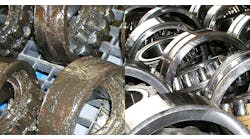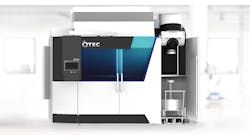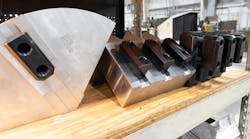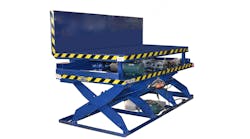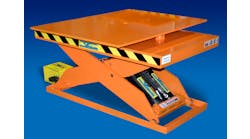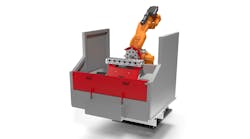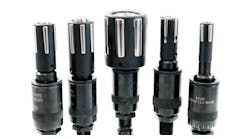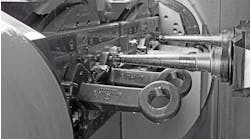The route from concept to commercialization is research and development, and it’s getting to be a crowded, high-speed lane. Not long ago, aluminum-lithium alloys were considered “next generation”; last month, Alcoa broke ground for a new melting and refining operation to produce its proprietary Al-Li materials – and that’s just one example of the types of materials on the road to commercialization.
QuesTek Innovations LLC, a materials R&D (“integrated computational materials engineering”) operation recently earned a two-year, Small Business Innovation Research (SBIR) Phase II project from the U.S. Air Force Research Laboratory to design and develop a new aluminum alloy that will have high-strength characteristics as well as thermal stability.
“This project builds upon our past successes such as Ferrium® C61™, C64™, M54™, and S53® alloys, developed in part with Department of Defense funding and now sold to commercial, industrial and governmental customers by U.S.-based alloy producers under their licenses from QuesTek,” noted the company’s president and CEO Charlie Kuehmann.
The objective of this research is an alloy that is stronger than the current material (Alloy 2014) at both room temperature and after high-temp exposure, in combination with corrosion- and fatigue-resistance — but with manufacturing costs similar to 2014. For reference, 2014 is described as a “precipitation-hardening alloy with good strength after heat treatment,” and it’s commonly used to manufacture aircraft structures and truck frames.
Questek — which offers a “Materials by Design” approach to develop new materials that reduce capital, processing, operating or maintenance costs, or improve environmental protection — noted that Alloy 2040 offers higher strength than 2014, but it has a single source and often is a more expensive selection, in part because of the raw materials cost associated with silver addition.
According to its contract, QuesTek will computationally design the new material by using conventional aluminum alloying additions and processing techniques. Eventually, it plans to license intellectual property for the new alloy to multiple alloy producers, in order to develop “a robust supply base.”
It said the new alloy should reduce component weight, improve component durability, and reduce operating costs. The project’s completed state will be production of full-scale, die-forged prototype parts in order to demonstrate improvements in key material properties versus alloy 2014. Potential applications of the new aluminum alloy include aerospace wheel and brake assemblies, and forged aluminum products used in aerospace structures or commercial vehicles, performance racing vehicles, and off-road equipment.
Another example involves cutting-edge processing, as well as materials. Powdermet Inc. reported it has made “significant advancements” in the performance levels of its forged nanocomposite aluminum alloys.
Working with the U.S. Army, Powdermet’s MComP™ nano/micro- aluminum composite achieved 30-50% higher ductility than standard high-strength aluminum alloys (e.g., aluminum-lithium), and the company said it has developed a powder metallurgy process that makes it possible to retain nano-crystallites and ductile phases throughout the powder forging process. This results in near-net shape, high-strength aluminum materials that have over 16% elongation to failure strengths, exceeding 350MPa (50KSI).
Competing aluminum-lithium high-strength alloys have tensile strengths of 50-70 ksi at 8-12% elongation, Powdermet explained: the nanocomposite materials show 50-72 ksi with 7-16% elongation, depending on forging conditions. Powdermet also developed nanocomposite aluminum alloys with strengths up to 200 ksi, with 1-2% elongation.
Currently, the program’s goal is to continue process development to achieve a 100 ksi, 8% ductility system that is cost-effective and does not rely on expensive strategic or rare-earth alloy additions. Powdermet also aims to demonstrate repeatable large cross-section part manufacturing using the 5,000-ton press and related equipment in its new Deformation Processing Center, near Cleveland.


